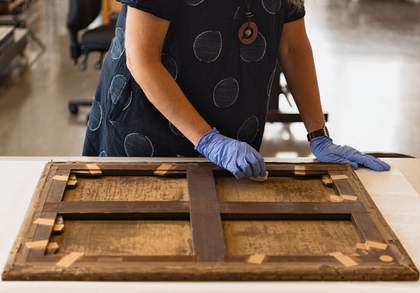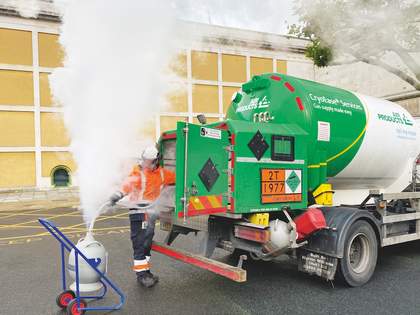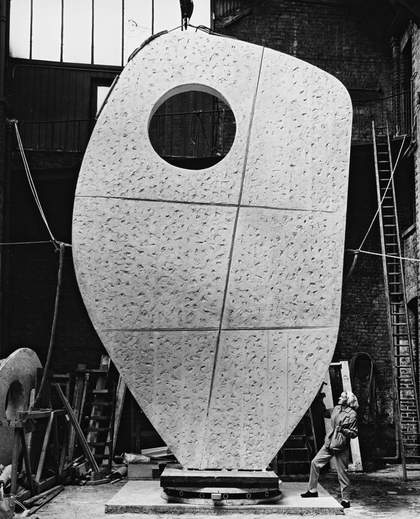
© Tate, photo: Kirstin Prisk. Artworks © Bowness
Barbara Hepworth first came to live in Cornwall on the outbreak of the Second World War in 1939. She lived and worked in Trewyn studios in St Ives from 1949 until her death in 1975. Honouring her wish that her home become a museum, it was placed in the care of the Tate Gallery in 1980. Most of the bronzes in her sculpture garden are still in the positions in which the artist herself placed them and are enjoyed by around 60,000 visitors a year.
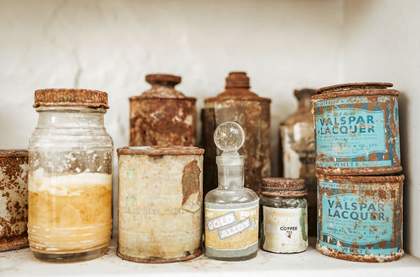
© Tate, photo: Kirstin Prisk. Artworks © Bowness
After her death, many of Hepworth’s tools and materials were also left in her studios. While this offers a unique snapshot in time and is an evocative insight into the sculptor’s working methods, it also demands special attention from Tate’s conservation team. Her stone-carving and plaster studios are housed in outbuildings set in the garden. These are not museum environments with the same level of atmospheric controls as the house and their climates more closely follow that of the outdoors, meaning the objects could deteriorate quite quickly without intervention. The challenge is to preserve the individual objects while maintaining the authentic atmosphere of Hepworth’s studios.
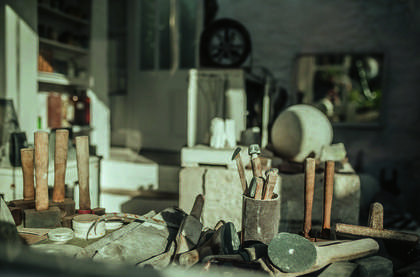
© Tate, photo: Kirstin Prisk. Artworks © Bowness
To prevent a build-up of corrosion, Hepworth’s steel tools (right) are treated every two years. Some are cleaned with brass wire brushes and solvents, followed by a hot wax finish, while others are cleaned with a de-corroder liquid and gel to keep the small amounts of plaster and marble dust that still adhere to them in place. Treatment of Hepworth’s tins of lacquer and paint (above) is more problematic as the tins have paper labels or are painted. Conservators must clean these items by hand with a scalpel and fine wire wool, being sure to work around the original paper labels.
The sculptures and tools in Hepworth’s studios are arranged according to photographs taken shortly after the museum opened, and new photographs are taken to monitor their condition year on year. The row of work coats hanging on the back of the door in Hepworth’s stone-carving studio is one of the most iconic sights in the museum. However, these are more likely to have belonged to Hepworth’s assistants than to the artist herself – the initials of one of her assistants, Norman Stocker, are embroidered on the collar of the orange coat. A textile conservator has padded the coats internally with a Plastazote foam former softened with wadding and covered with cotton fabric to give them some support so they no longer hang directly from the nails and hooks on the studio door. The garments are gently vacuumed once a year to remove dirt and dust. After treatment, conservators use photographs to place them back in their original positions. The brown coat on the far left contains an interesting secret in its pockets – two electric whisk attachments. These were most likely used for mixing up plaster, but it’s fun to speculate what other uses they might have been put to.
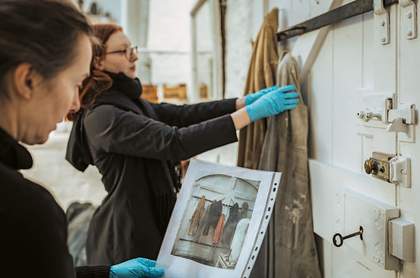
© Tate, photo: Kirstin Prisk
Both the stone-carving studio and the neighbouring plaster studio are cleaned regularly using brushes of various sizes, as well as specialist conservation vacuums. These lift the dust and dirt that can otherwise settle and compact on surfaces, making them more difficult to remove. The dirt also attracts moisture, which can trigger corrosion, especially in the coastal environment of St Ives.
The Barbara Hepworth Museum and Sculpture Garden in St Ives, Cornwall is free to visit for Tate Members. Artworks by Barbara Hepworth are also on display at Tate St Ives and as part of the Walk Through British Art at Tate Britain. Barbara Hepworth: Art & Life, The Hepworth Wakefield, 21 May 2021 – 27 February 2022.
Deborah Cane is Conservation Manager, Sculpture and Installation Art, Tate.

